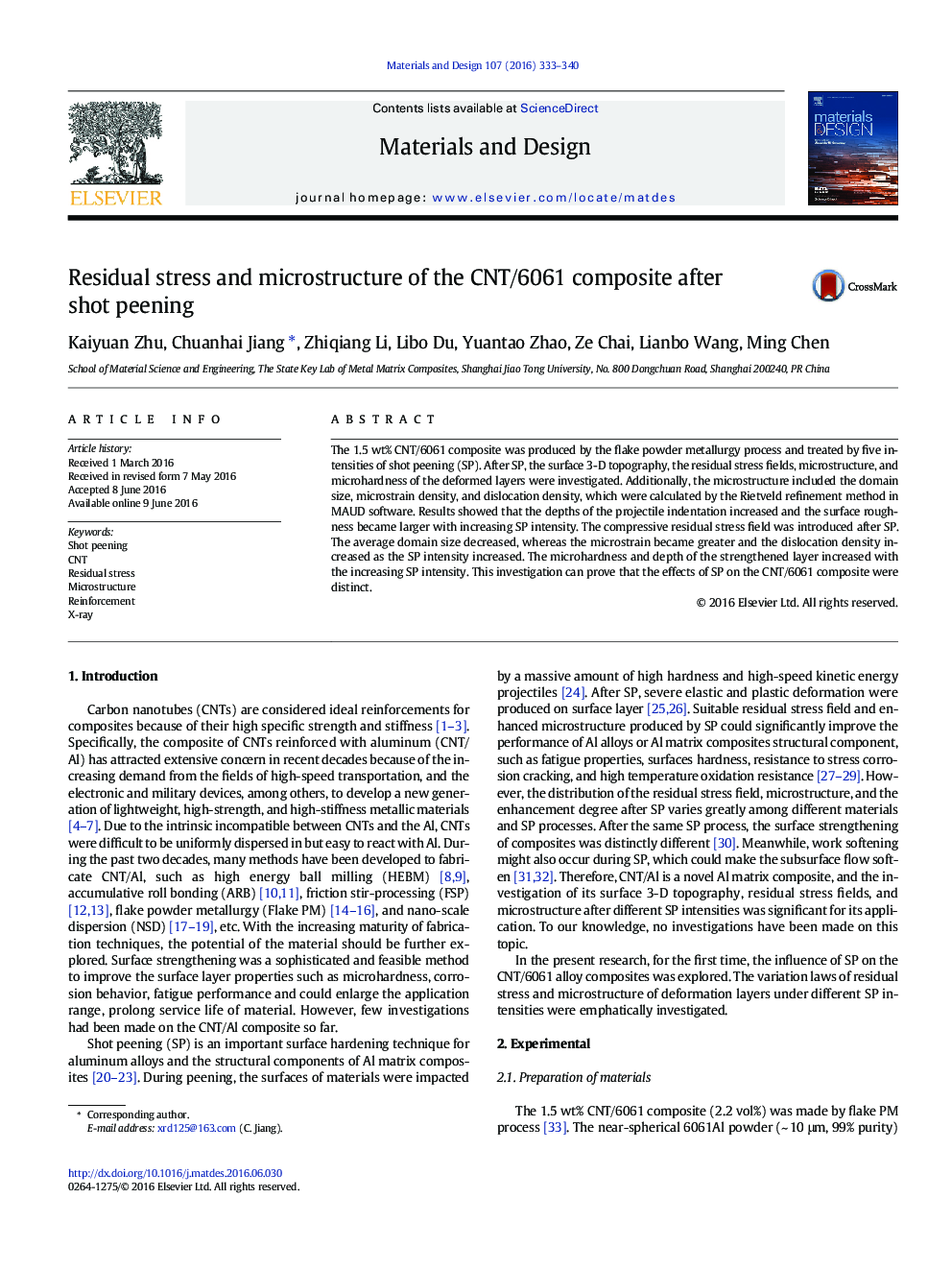| Article ID | Journal | Published Year | Pages | File Type |
|---|---|---|---|---|
| 827785 | Materials & Design | 2016 | 8 Pages |
•The compressive residual stress field of the samples was introduced by SP.•Domain sizes decreased, microstrain increased significantly along SP intensity.•The CNTs added might be able to generate strengthening with Orowan mechanism.
The 1.5 wt% CNT/6061 composite was produced by the flake powder metallurgy process and treated by five intensities of shot peening (SP). After SP, the surface 3-D topography, the residual stress fields, microstructure, and microhardness of the deformed layers were investigated. Additionally, the microstructure included the domain size, microstrain density, and dislocation density, which were calculated by the Rietveld refinement method in MAUD software. Results showed that the depths of the projectile indentation increased and the surface roughness became larger with increasing SP intensity. The compressive residual stress field was introduced after SP. The average domain size decreased, whereas the microstrain became greater and the dislocation density increased as the SP intensity increased. The microhardness and depth of the strengthened layer increased with the increasing SP intensity. This investigation can prove that the effects of SP on the CNT/6061 composite were distinct.
Graphical abstractFigure optionsDownload full-size imageDownload as PowerPoint slide
